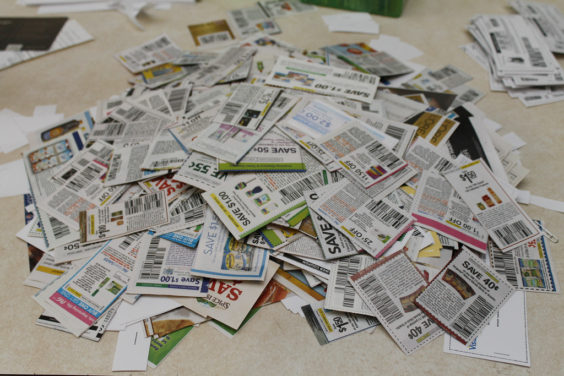
Hundreds of billions of coupons are distributed every year. And those you don’t want, you can just disregard. Or maybe you cut out what appeals to you, file them away, and toss them if you end up not needing them. No big loss to you, other than the time it took you to clip them.
It’s a little different when it comes to printable coupons. You’re in control, choosing only the offers that appeal to you. So when you print a coupon online, it must be something you really think you’re going to use. And since you’re paying for the paper and ink, you’re likely to be much more judicious about what you clip.
Compared to the coupons offered in the Sunday inserts, the majority of which you might not even want, that must mean there’s much less waste associated with print-at-home coupons. Right?
Well, consider this. New research shows that we’re taking the time to print more than 1.5 billion coupons, worth some $2.7 billion – all of which we never bother to use.
That insight is contained in the coupon processing company Inmar’s annual Coupon Trends Report. The latest report compiles coupon redemption statistics from the past year, much of which have been discussed here previously – 329 billion coupons for consumer packaged goods products were distributed in 2013. That’s up 3.6% from the previous year, though coupon redemption fell slightly, to 2.9 billion coupons. That means we’re actually using less than 1% of all coupons distributed.
Digging deeper into the numbers shows that the redemption rate for printable coupons – those coupons we actually choose, as opposed to the ones that are sent to us blindly – is somewhat better. But not as much as you might think. Out of 1.27 billion coupons printed by couponers last year, just 145 million were used, representing a redemption rate of roughly 10%. Inmar says the average face value of printable coupons last year was $1.73. So some 90% of all the coupons we actually chose to print in 2013 – more than $2.7 billion worth – ended up getting tossed.
So why would coupons that once looked enticing enough to print, end up never getting used at all? Inmar cites “multiple factors”, including “category, face value, brand influence, trade activity, advertising support, etc.” Maybe you printed a coupon and held on to it, in the hopes of combining it with a sale that never came. Maybe an advertisement or in-store display for a competing product persuaded you to buy it instead of the product that you had printed a coupon for.
Overall consumer attitudes about coupons may play a part, too. An Inmar shopper survey found that 61% of coupon users agreed that they were discouraged because “my coupons often expire before I have the chance to use them.” Typically, a printable coupon has a 30-day lifespan, and the clock starts ticking the moment you print. 48% complained that “there are too many rules/exclusions for using coupons.” Unlike insert coupons, where you can read the fine print before you clip, printable coupons can sometimes offer unpleasant surprises that make them less appealing than they first appeared. That coupon advertised as offering “$1 off”, for example, might actually turn out to be “$1 off three” once you print it.
With 287 billion newspaper insert coupons distributed last year, and 1.1 billion redeemed, insert coupons remain the most common types of coupons by far. They represented 89% of all coupons out there in 2013. But that redemption rate – 1.1 billion used, out of 287 billion offered – is less than one-half of one percent. After peelies, blinkies and tearpads, printable coupons have one of the highest rates of redemption – twice the rate of digital load-to-card coupons, and nearly 20 times better than insert coupons.
So insert coupons may be the most ubiquitous, and digital coupons may be heralded as the wave of the future, but print-at-home coupons remain plenty popular. Just try not to print too many that you won’t be using this year. Otherwise you may find yourself searching for more coupons for paper and ink pretty soon.











While I agree with the reasons you gave for not using the coupons I have already printed: Short expiry, low face value, no ad to match with, specific restrictions for size, color etc…you left out one very important aspect to ‘printable’ coupons.
Grocers and cashiers invariably look upon them with a greater level of suspicion than they do commercial ad insert coupons.
Not only that, I find that the computerized registers have an increased tendency to reject them as well. The numbrer of rejects are not insignificant. I rarely RARELY have an ad coupon rejected, but printed? Ask anyone! Common occurrence.
Bottom line: We don’t redeem them because they’re no good! They’re rejects…And the manufacturers know it.
They’re gambling on the chance that you will not abandon the product at the register (after the coupon was rejected.).
Well, that and if there are 40,000 coupons available in a coupon offer, *I am going to print it when I see it*. I might not use it, but if I see a great bogo coupon or something, I’m going to print it, even if I am not sure I’ll use it this month, because that sucker is going to be *gone* tomorrow. Inmar seems to be completely ignoring the artificially created scarcity issues.